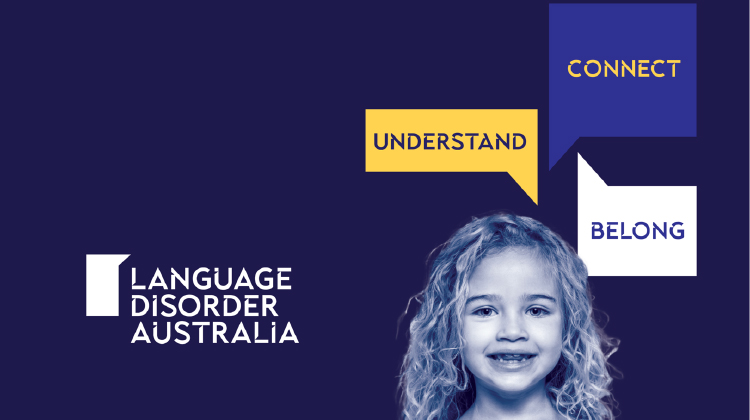Ensuring Extraordinary Outcomes for Young People with Language Disorder

For many decades, there has been a lack of agreement regarding how to best describe children presenting with language difficulties (Bishop et al., 2016). This has subsequently led to difficulties with consistency in diagnosis, access to intervention and supports, community awareness and advocacy. Previously, a variety of terms were used such as language delay, language impairment, speech language impairment and childhood aphasia. However, we now have the internationally agreed upon term, of Language Disorder (Bishop et al., 2017).
Language Disorder is a neuro-developmental disability. It impacts the way a person, thinks about, understands, and uses language. It is a persistent and lifelong disability. Because language is fundamental to life, difficulties in this domain can have far reaching impacts. For example, how a young person communicates their needs, their educational attainment, building social connections and more. Signs of Language Disorder are often evident in the early years. Studies show that children with language difficulties at age 5 are likely to experience long term and persistent problems throughout their lives.
Language Disorder is associated with a biomedical condition/conditions, for example, individuals with Autism, Intellectual Disability, Down Syndrome will often have various levels of difficulties across domains of language. The cohort of our children and young people with Language Disorder in the classroom context is conservatively estimated to be 10% of our learners in a typical classroom. (Norbury et al., 2016). For children and young people who have no other diagnosis but have persistent language difficulties across all languages they speak, we use the term Developmental Language Disorder (DLD). DLD affects 1 in 14 students in a classroom and is referred to as a ‘hidden disability’, as these students may not have overt signs of disability yet may be struggling in the classroom. Like any disorder, this may be mild, moderate or severe in its presentation and may affect access to the curriculum, participation in activities of daily living and social-emotional domains. However, it is important to note that given how foundational oral language is to a learner, any degree of Language Disorder is likely to have functional impacts in the classroom.
As Language Disorder and DLD affects 10% of students in a classroom, it is likely that teachers will have at least one if not many learners with this challenge in their classroom, each with their own unique profile of strengths and challenges.
Within classrooms, learners with Language Disorder and DLD may present as experiencing difficulties with:
- Understanding language (e.g., understanding and following instructions, remembering information correctly, comprehending a written passage and drawing correct inferences, etc.)
- Using language (e.g., structuring grammatically-correct sentences, using a rich vocabulary, using expected social conventions e.g. recognising the degree of ‘formality’ of a conversational context. etc.)
Teachers and speech pathologists partnering together can lead to the successful implementation of strategies to support our learners with Language Disorder to access the curriculum. Indeed, it is likely that there are numerous classroom strategies that you are already implementing that benefit this cohort of learners. In our session, we will be discussing a range of quality evidence-based strategies to add to your tool box.
Remembering that adjustments for leaners with Language Disorder and DLD will be crucial for some, helpful for all and harmful to none. If you want to access any of our Language Disorder Australia resources, including information about who we are, what we do, and how we can support you, feel free to see our website at Language Disorder Australia.
References
Bishop, D. V. M., Snowling, M. J., Thompson, P. A., & Greenhalgh, T. (2016). CATALISE: A Multinational and Multidisciplinary Delphi Consensus Study. Identifying Language Impairments in Children. PLOS ONE, 11(7), e0158753. https://doi.org/10.1371/journal.pone.0158753
Bishop, D. V. M., Snowling, M. J., Thompson, P. A., & Greenhalgh, T. (2017). Phase 2 of CATALISE: a multinational and multidisciplinary Delphi consensus study of problems with language development: Terminology. Journal of Child Psychology and Psychiatry, 58(10), 1068–1080. https://doi.org/10.1111/jcpp.12721
Norbury, C. F., Gooch, D., Wray, C., Baird, G., Charman, T., Simonoff, E., Vamvakas, G., & Pickles, A. (2016). The impact of nonverbal ability on prevalence and clinical presentation of language disorder: evidence from a population study. Journal of Child Psychology and Psychiatry, 57(11), 1247–1257. https://doi.org/10.1111/jcpp.12573